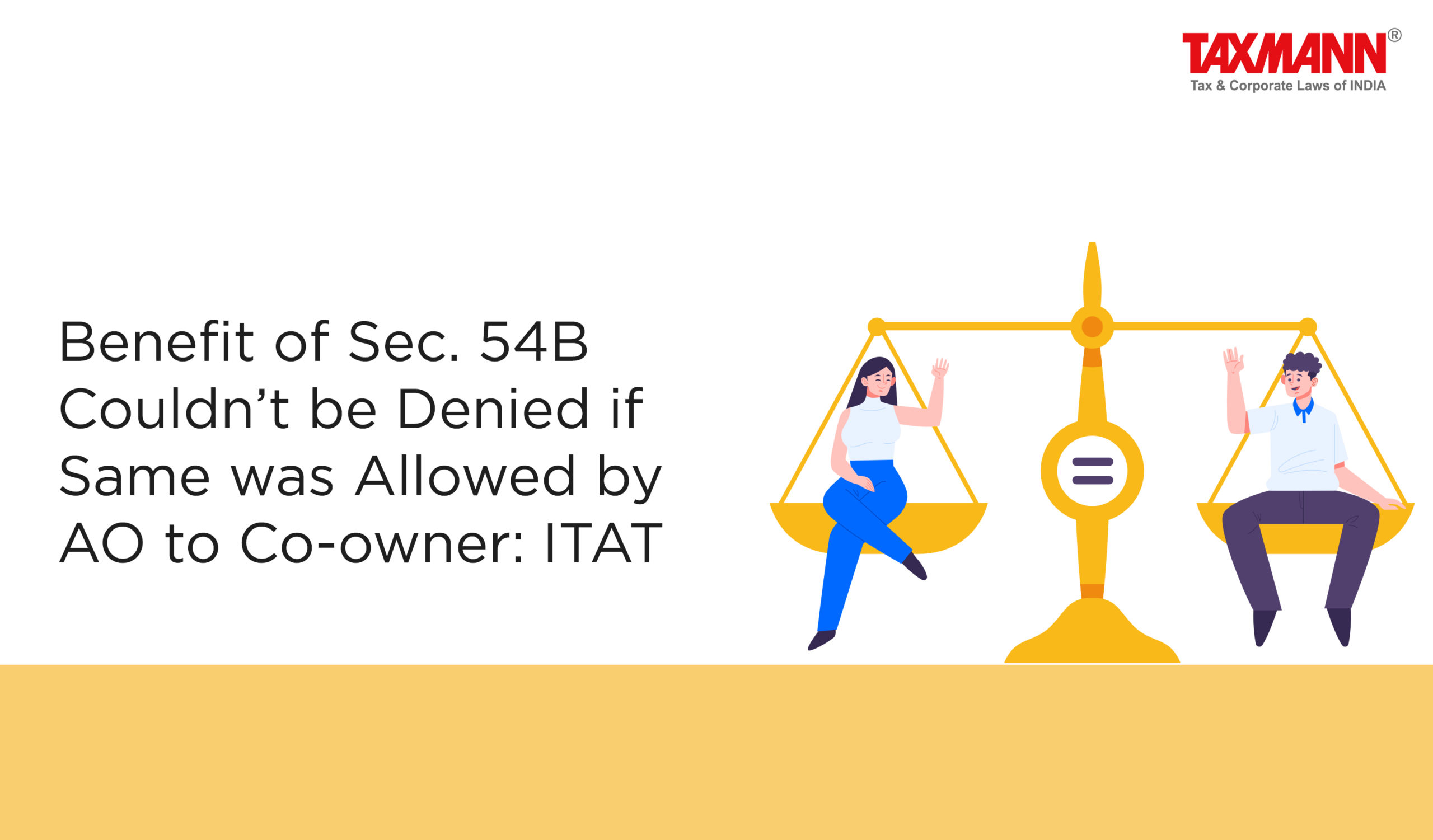Benefit of Sec. 54B Couldn’t be Denied if Same was Allowed by AO to Co-owner: ITAT
- Blog|News|Income Tax|
- 2 Min Read
- By Taxmann
- |
- Last Updated on 14 July, 2023
Case Details: Bhikhabhai Rajabhai Dhameliya v. PCIT - [2023] 151 taxmann.com 493 (Surat-Trib.)
Judiciary and Counsel Details
-
- Pawan Singh, Judicial Member & Dr. A.l. Saini, Accountant Member
- Sapnesh R. Sheth, C.A. for the Appellant.
- Ashok B. Koli, CIT-DR for the Respondent.
Facts of the Case
Assessee-individual sold agricultural land during the relevant assessment year and filed the return of income by claiming exemption under section 54B. Subsequently, the Principal Commissioner (PCIT) exercised its jurisdictional power under section 263. It was observed that the land sold was non-agricultural since said land was converted from agricultural to non-agricultural by the then-owner.
Assessee contended that the then owner had applied for conversion of only that part of land sold to another entity, and the remaining part not applied for conversion was purchased by the assessee and other co-owners. Unsatisfied with the explanation, it was concluded that the Assessing Officer (AO) had erred in not disallowing the deduction under section 54B.
Aggrieved by the order, the assessee preferred an appeal to the Surat Tribunal.
ITAT Held
The Tribunal held that from the sale deed, it is clear that the then-owner, along with other lands he owned, applied for seeking permission for non-agriculture usage of certain areas. It means that prior to seeking permission for non-agriculture usage, these lands were used for agricultural purposes.
Further, concerning one of the co-owners, the order issued by the PCIT under section 263 had an appeal effect. AO recognized this appeal effect through an order passed under section 143(3) in conjunction with section 263. In this order, the AO granted a deduction under section 54B.
Therefore, when the Department accepted the claim of deduction under section 54B, in the case of one co-owner, then in that situation, the other co-owners of the same land should not be treated differently. Hence, other co-owners should also be allowed deduction under section 54B.
List of Cases Referred to
-
- CIT v. Siddharth J. Desai [1982] 10 Taxman 1/[1983] 139 ITR 628 (Guj.) (para 19)
- Malabar Industrial Co. Ltd. v. CIT [2000] 109 Taxman 66/243 ITR 83 (SC) (para 20).
Disclaimer: The content/information published on the website is only for general information of the user and shall not be construed as legal advice. While the Taxmann has exercised reasonable efforts to ensure the veracity of information/content published, Taxmann shall be under no liability in any manner whatsoever for incorrect information, if any.

Taxmann Publications has a dedicated in-house Research & Editorial Team. This team consists of a team of Chartered Accountants, Company Secretaries, and Lawyers. This team works under the guidance and supervision of editor-in-chief Mr Rakesh Bhargava.
The Research and Editorial Team is responsible for developing reliable and accurate content for the readers. The team follows the six-sigma approach to achieve the benchmark of zero error in its publications and research platforms. The team ensures that the following publication guidelines are thoroughly followed while developing the content:
- The statutory material is obtained only from the authorized and reliable sources
- All the latest developments in the judicial and legislative fields are covered
- Prepare the analytical write-ups on current, controversial, and important issues to help the readers to understand the concept and its implications
- Every content published by Taxmann is complete, accurate and lucid
- All evidence-based statements are supported with proper reference to Section, Circular No., Notification No. or citations
- The golden rules of grammar, style and consistency are thoroughly followed
- Font and size that’s easy to read and remain consistent across all imprint and digital publications are applied








 CA | CS | CMA
CA | CS | CMA


